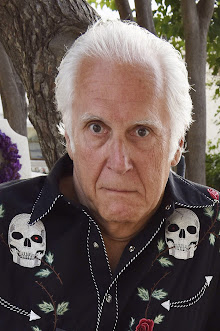Femi Kayode – guest post
I’ve been intrigued for some time by the size and power of the evangelical churches in various parts of Africa. Judging by several thrillers that focus around them, they behave like massive business conglomerates, generating huge amounts of money that don’t always end up at their intended destinations. One of these institutions played a central role in Leye Adenle’s latest Nigerian Amaka thriller, Unfinished Business. Another, in Ghana this time, was important in one of Kwei Quartey’s Darko Dawson mysteries, Death by His Grace.
So when I started reading Femi Kayode’s new
novel, Gaslight, I wasn’t too surprised to find
Grace Church, another Nigerian megachurch, at the heart of
psychologist-detective Philip Taiwo’s new case. The leader of the
church, known simply as Bishop, is arrested for the murder of his wife who has
disappeared, and the church elders ask Philip to investigate. Philip is
ambivalent, but eventually is persuaded. His skills and logical reasoning soon
allow him to deduce that the police have misunderstood the situation and he
obtains Bishop’s release. But that’s not the end of the case; in fact, it’s the
beginning. The story addresses big themes with rich and believable characters
including Philip’s own family. Femi was nervous of the “Second Novel Syndrome”
but he’s come up with another winner bringing him accolades from media
reviewers as well as writers like S.A. Cosby and Lee Child.
Giving way to my curiosity about the West
African evangelical megachurches, I asked Femi about it. His thoughts give
insight far beyond the west African environment, so I asked him if we could
restructure it as a blog for Murder Is Everywhere. He agreed. This was my question:
“The Evangelical churches of Nigeria with
their charismatic preachers seem to be hugely powerful and important there.
They also seem to generate a lot of money. Why are they so successful in
Nigeria in particular?”
 |
| Femi Kayode |
I am smiling at the word ‘successful’, because that speaks to this idea that evangelical churches are an enterprise of some sort. And one can be forgiven for thinking that after reading Gaslight or being exposed to some of the stories about these churches in popular media. But to my mind, that would be reductionist thinking. Evangelical churches are a bona fide group within organized Christian faith. I am not sure their rise (or success, as you call it) is any different from that of the more established groups like Lutherans, Baptists or Protestants or even the charismatic sect within the Catholic Church. Every group, sub-group or sect, came into existence in response to the times – the politics, the socio-economic circumstance of the day, the health index of that era and even the conflict within the established church, almost always led to the re-creation of an ideology that people believed would be the divine solution to the challenge of the day.
With that said, I think what you call ‘success’
could be referred to as the ‘rise’ of evangelical churches. And this rise was
driven my several factors, especially between early late seventies to
mid-nineties. It was post-civil war Nigeria; the oil boom had burst and the
country was going through several coup d’états. In my research, there was a
definite correlation between the rise of evangelical churches and the
increasing collapse of the Nigerian economy. The more unstable the political
situation was, the greater the collapse of institutions and the more frayed the
socioeconomic fabric of the country, the more people needed to find some kind
of hope.
Now, one can ask why didn’t they find it in the
established religious institutions. I believe that a number of people saw these
established institutions a part of the old, the tested and see-where-it-got-us
institutions. So, the hope people sought was intertwined with a desire for the
new, the novel. And the evangelical churches took advantage of this need. They
would quote bible passages implying that the old ways of worshipping God are
antiquated and not working. People believed it because the proof that it was
not working was all around them. Broken health systems, spiraling quality of
education, insecurity, the unstoppable fall of the Nigerian currency, the list
went on. And again, to be fair, it was reminiscent of every era that gave rise
to a new religion or sect within an existing religion. And it was not happening
in Christianity alone. We saw a rise in charismatic movements within the
Islamic religion too.
To my mind, I think the evangelical emphasis on spiritual warfare resonates deeply with the traditional African worldview, where there has always been a greater emphasis on the influence of spiritual forces on our physical realities. When you add this to the evangelical churches’ ability to quickly adapt to the cultural nuances of the society through the incorporation of local music, dances, language and more, you will understand why a large portion of people felt a greater sense of ownership over their religious practice as against the perpetuation of existing dogma of the more established churches which were inherited from the colonial era.
Another contributing factor was the increasing
exposure of the country to the United States. This was at an all-time high
between the Second and Third republic, especially when the country aligned its
system of government to what they thought was the American system. There was a
huge influx of evangelical churches coming in from the States, and migration
between the two countries was quite high – perhaps in response to the negative
role of Britain and some European countries in the civil war coupled with a
kind of collective rebellion against our colonial past. Whatever the reason
was, the image of the fiery preacher who conducted miracles and brought Jesus
closer to the people (against all odds) was a much-needed antidote to the
disaffection people felt towards the political class. This aspect of the
phenomenon cannot be divorced from their adept use of electronic media (another
American trait). The innovative use of various media platforms (a practice that
was shunned by traditional, established churches until recently), including the
use of the internet and social media, has helped evangelical churches reach
wider audiences across the world. That influence and spread validated a lot of
these churches and confirmed to the congregants that indeed this was a wave
ordained by God. And the rise continued.
The fact is, there is no one contributory factor
to this global rise — make no mistake, it is not restricted to the African
continent — I think the common denominator across cultures is huge disparities
between the rich and the poor. Low socio-economic development, lack of access
to infrastructure and high inequities are what make people feel hopeless and
helpless. When despair sets in, people seek succour where they can. Some in
drink (ever wondered why the sale of alcohol soars during economic distress?),
some in work/business (hoping for promotion as a signal of progress?), and most
in religion. We also tend to look for heroes in humans just like us, perhaps
because we are too afraid to ask that existential question: if there is a God,
why is everything so dark? We hold on to these religious leaders, for dear
life. Literally. We can see them, touch them. They are tangible and even when
their version of how the world or God works seems fantastical, we suspend
disbelief. We have to, because our daily reality is too harsh, too grim. We
need the fantasy world these pastors, movie stars, influencers, reality TV
actors and more, give us.
As for the money Evangelical Churches make,
suffice to say like every organised group/corporation that sells a product,
they are expected to make money. Can anyone fathom the amount of money the
Catholic Church has and continues to make? Or the Church of England? Here’s the
thing; the money the evangelical churches make is only an issue because of the
lack of accountability. When one person amasses millions in the name of
religion and escapes the scrutiny applied to other forms of enterprise, then we
have a problem. And as the saying goes, absolute power corrupts absolutely. The
corruption that engulfs most of these new age churches is a reflection of this
human truth.
It is this corruption that I try to explore in Gaslight. First, as a cautionary tale for those of us who elevate one person to God-like levels and secondly, to challenge this idea that corruption is limited to such religious spaces. It exists everywhere. In all institutions and spheres of life. And the moral of the novel is simple. When reason or common sense has been suspended as a matter of survival, expect all hell to break loose.






























.jpg)































